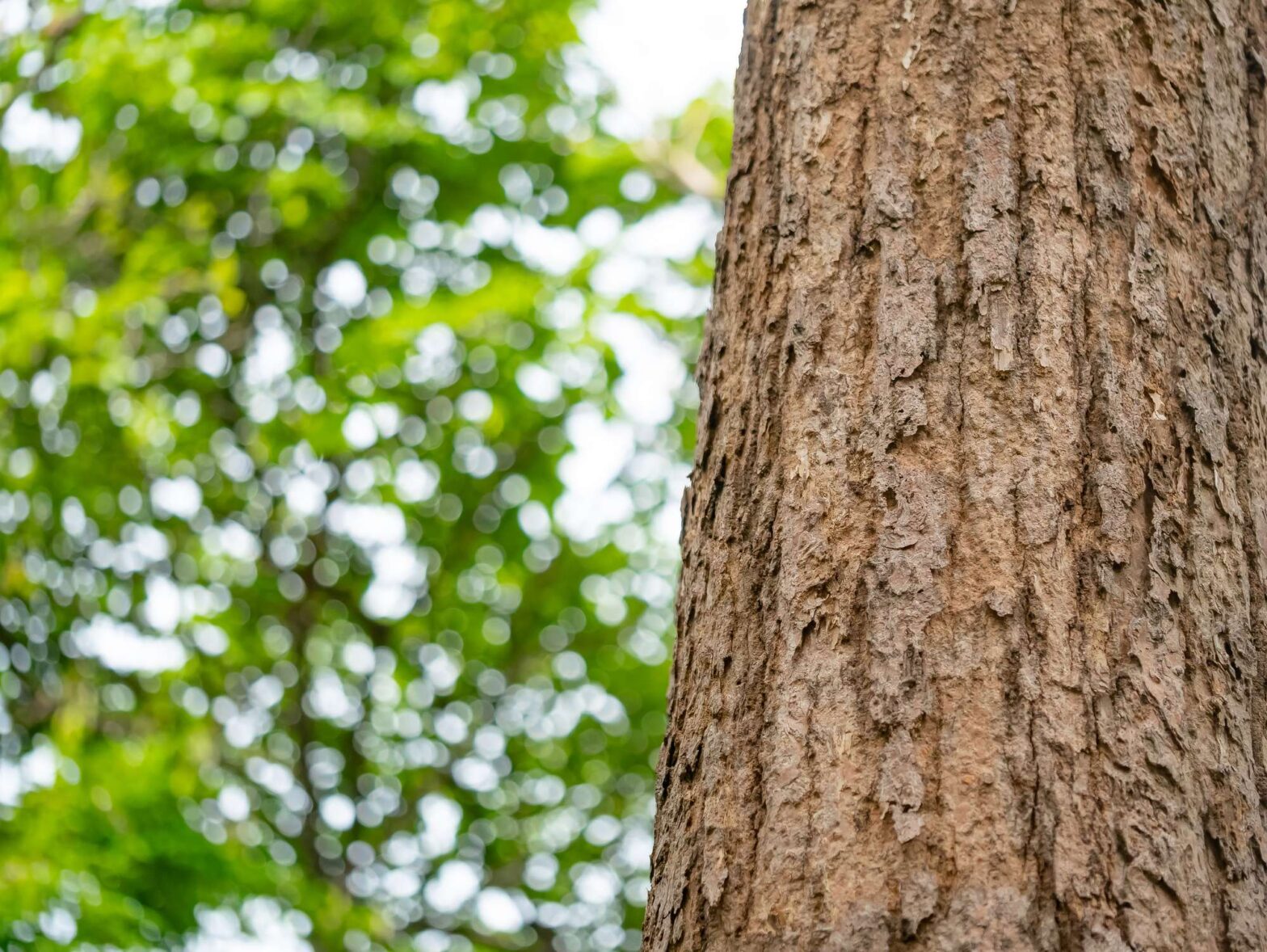Black, crispy, and darn-right delicious, the bark on a brisket, shoulder, or a rack of ribs is so good, we select out meats, tweak our recipes, and optimize our smoking technique just to build it.
But can the same be said about the bark on the logs and chunks you throw in your smoker’s firebox? If you left the bark on, will the meat you smoke come out smelling and tasting better than if you removed it?
That’s the question one of you asked the other day. When I saw it in our questions inbox, I took it upon myself to answer. The long and the short of it is that what’s true for your meat ain’t necessarily true for your firewood.
Take a gander below to find out why.
Always remove the bark from the wood you smoke your meat with. Leaving it on makes the smoke heavy, which imparts harsh aromas and bitter flavors onto your meat.
The thing about tree bark, and what makes it generally incompatible with smoking meat, is that—above all and as far as our tastebuds are concerned—it is a source of bitterness.
Tree bark contains tannins, those polyphenols naturally found in grapes that give wine, especially homemade, an astringent and bitter taste. The bitters that bartenders add to Old Fashioned cocktail are also made from ethanol infused with tree bark.
Those tannins are there for a reason, folks, and it’s not to make your smoked meat smell and taste better, no: They are there to deter insects that bore into the wood. Without them, these insects get to the inner bark, which carries water and nutrients from the ground to the leaves for them to feed on.
Mother Nature is the best engineer of us all. She has given the trees a bark as a protective garment that shields them from air and weather and protects them from insects and wild animals with aromas that deter the former and flavors that repel the latter.
Is This Any Different for Seasoned Wood?
Much of the information out there on the Internet—BBQ forums where folks who truly know their stuff help each other out excluded—about whether or not you should remove the bark from your wood, has clearly been written by authors who have never lit a fire in their lives, let alone cooked over it.
So, as you google this topic, which is probably how you came across Barbehow in the first place, you will come across some contradictory, ill-informed advice hidden in a long verbiage of unifying words.
Some of that advice says that, as long as your firewood has been kiln-dried or well-seasoned, you can leave the bark on. Lest you want to postpone supper by a day and have to run to the butcher’s for a second slab of meat in the morning, don’t listen.
Tree bark should almost always be removed for smoking, whether the wood is kiln-dried or well-seasoned. Apart from making the meat taste bitter, it combusts haphazardly, turning temperature control into a challenge.
And the good Lord knows that temperature control makes all the difference, from the moment the meat slides into the smoker to when it comes out of it nice and crusty.
This is particularly important if you’re not just throwing a few chunks of wood for the smoke and flavor, but you’re using logs, split logs, or large pieces of wood for fuel (instead of charcoal from the hardware store).
At all times, you want your wood to combust low and slow, evenly and predictably. By doing so, you ensure a clean smolder that doesn’t make the meat taste funny, and a predictable burn that tenderizes the meat without burning the crust all up or stiffening it up on the inside.
Isn’t There Some Recipe or Technique That Leaves the Bark On?
Why did I say “almost always” in the bold paragraph above, you wonder? Well, I’m sure that somewhere, someone found a type of tree whose bark burns well, and came up with a recipe and technique for some kind of meat that makes use of it.
In the old days, when you actually had to go hunting to feed yourself and the family, people were quite inventive—and had alternatives for those times when they returned empty-handed. Take Scandinavian bark bread as an example.
When Scandinavians’ crops failed in the Little Ice Age of the 18th century, a tough time by any criterium, they collected twigs and branches from deciduous trees and shrubs, split the bark, and dried the inner part of it over a fire. The result was a dry mass that you could mill into flour and make bread out of.
So I’m almost certain that there’s a traditional method or two for smoking red meat, poultry, or fish that the indigenous people of the North and/or Pacific have developed that’s not yet found its way into the mainstream. Maybe some day, it will.
Final Words
The bark: Admittedly, a thing to strive for on your beef brisket and a thing to strip off from your hickory wood.
Tree bark makes your wood burn unevenly and give off heavy smoke that makes your food bitter, especially during a long cook.
Simply put, even if your firewood has been dried in a kiln or seasoned for a year, the best thing to do is to remove the bark before throwing the wood in the firebox of your smoker.

